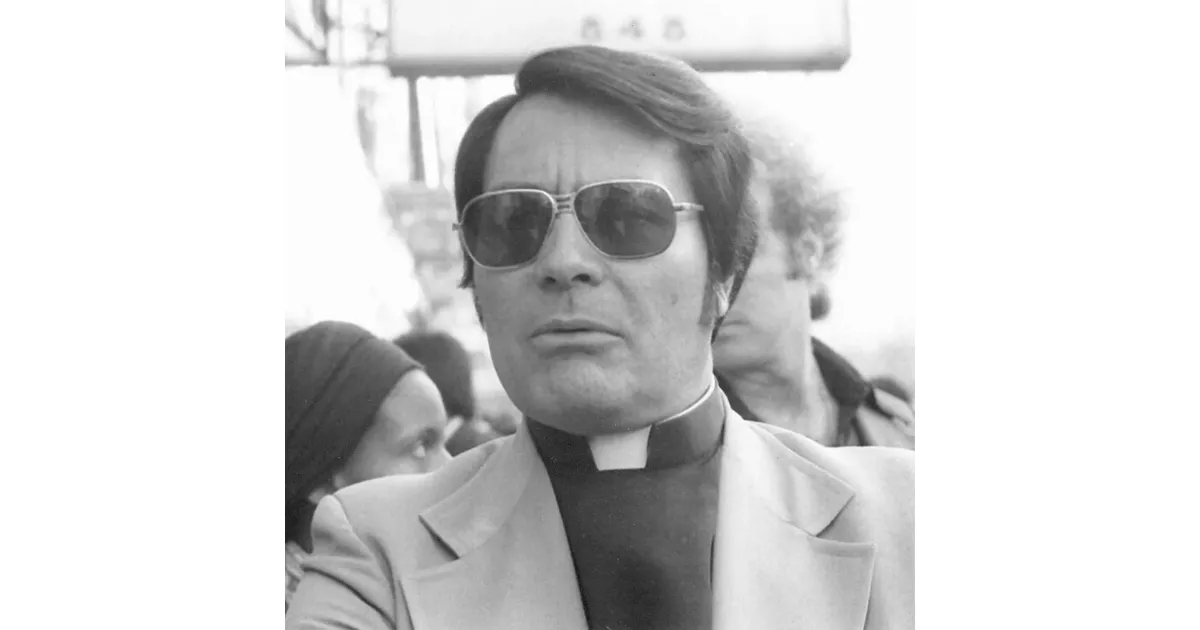Jim Jones was an American cult leader who founded the Peoples Temple. He is infamous for orchestrating a mass murder-suicide in Jonestown, Guyana, on November 18, 1978. Over 900 people, including Jones, died by cyanide poisoning, an event Jones termed "revolutionary suicide." The Jonestown Massacre significantly shaped public perception of cults and remains a stark example of the dangers of charismatic leadership and religious extremism.
April 16, 1902: Birth of Lynetta Putnam
On April 16, 1902, Lynetta Putnam, Jim Jones's mother, was born. She and Jones both claimed to have some Cherokee ancestry, but there is no evidence of this.
May 13, 1931: Birth of James Warren Jones
On May 13, 1931, James Warren Jones, later known as Jim Jones, was born. He would grow to become an American cult leader, preacher, and mass murderer, founding and leading the Peoples Temple.
1934: Eviction of Jones Family
In 1934, during the Great Depression, the Jones family was evicted from their home due to failure to make mortgage payments. Relatives purchased a shack for them in Lynn.
1942: Kennedy Family Visit
In 1942, Jones went to see the Kennedy family when they spent the summer in Richmond, Indiana. They took part in services four times a week at a Pentecostal church.
1945: Parents' Separation
In 1945, Jim Jones's parents separated and eventually divorced. This family change led to Jim Jones moving to Richmond, Indiana with his mother.
1946: Began working at Reid Hospital
In 1946, to support himself after his parents' divorce, Jones began working as an orderly at Richmond's Reid Hospital, where he displayed disturbing behavior.
November 1948: Attended Indiana University Bloomington
In November 1948, Jim Jones moved to Bloomington, Indiana, and attended Indiana University Bloomington, initially intending to become a doctor. During his time there, he began to espouse support for communism.
December 1948: Graduation from High School
In December 1948, Jim Jones graduated from Richmond High School early and with honors. After graduation, he was able to pursue further education and career opportunities.
June 12, 1949: Marriage to Marceline Mae Baldwin
On June 12, 1949, Jim Jones married Marceline Mae Baldwin. Arguments about religion and Jones's atheism strained their marriage throughout their relationship.
May 29, 1951: Death of James Thurman Jones
On May 29, 1951, James Thurman Jones, Jim Jones's father, passed away. He was a disabled World War I veteran who suffered from severe breathing difficulties.
1951: Relocation to Indianapolis and Butler University Enrollment
In 1951, Jim Jones and his wife relocated to Indianapolis, where Jones took night classes at Butler University. Also in 1951, Jones began attending gatherings of the Communist Party USA in Indianapolis.
1952: Harassment from Government Authorities
During 1952, Jim Jones and his family faced harassment from government authorities due to their affiliation with the Communist Party, including Jones' mother allegedly being harassed by FBI agents.
1952: Declared Intention to Become a Methodist Minister
In early 1952, Jim Jones announced his intention to become a Methodist minister, believing the church was ready to "put real socialism into practice." He was surprisingly supported by a Methodist district superintendent.
1952: Hired as Student Pastor
In the summer of 1952, Jim Jones was hired as a student pastor at the Sommerset Southside Methodist Church and launched a project to create an integrated playground. He continued to visit and speak at Pentecostal churches while serving as a Methodist student pastor.
1953: Visited Pentecostal Latter Rain Convention
Around 1953, Jim Jones visited a Pentecostal Latter Rain convention in Columbus, Indiana, where a woman prophesied that Jones was a prophet with a great ministry. This endorsement affirmed Jones's calling to preach.
1953: Began Preaching at Laurel Street Tabernacle
In 1953, Jim Jones began attending and preaching at the Laurel Street Tabernacle in Indianapolis, a Pentecostal Assemblies of God church. He also held healing revivals there and traveled to speak at other churches.
1954: Adoption of Agnes
In 1954, the Joneses adopted their first child, Agnes, who was part Native American.
1954: Dismissal from Methodist Church
In early 1954, Jim Jones was dismissed from his position in the Methodist Church, ostensibly for stealing church funds. Jones claimed he left because the church forbade him from integrating African-Americans into his congregation.
June 1955: First Joint Meetings with William Branham
In June 1955, Jim Jones held his first joint meetings with William Branham, a healing evangelist and Pentecostal leader. This collaboration enhanced Jones's reputation in the Healing Revival movement.
1955: Continued preaching at Laurel Street Tabernacle
In 1955, Jim Jones continued to hold healing revivals at the Laurel Street Tabernacle until a new pastor enforced a ban on the practice.
1955: Founded the Peoples Temple
In 1955, Jim Jones founded the organization that would become the Peoples Temple in Indianapolis. This marked a significant step in his career as a religious leader.
1955: Established Wings of Healing
In 1955, after leaving the Laurel Street Tabernacle, Jim Jones established Wings of Healing, a new church that would later be renamed Peoples Temple. To fund the church, he sold pet monkeys.
1956: Influence of Father Divine and the Peace Mission movement
In 1956, Jim Jones began to be influenced by Father Divine and the Peace Mission movement. This influence potentially shaped his later actions and teachings within the Peoples Temple.
1956: First visit to Father Divine's Peace Mission
In 1956, Jim Jones visited Father Divine's Peace Mission in Philadelphia. He claimed his visit was to provide an objective statement about the Mission's activities to his fellow Pentecostal ministers.
1956: Ordained as IAoG Minister
In 1956, Jim Jones was ordained as an IAoG minister by Joseph Mattsson-Boze and organized a healing convention to take place June 11–15, 1956, in Indianapolis's Cadle Tabernacle, sharing the pulpit with William Branham.
1957: Hosted International Pentecostal Convention
In 1957, Peoples Temple hosted a second international Pentecostal convention headlined by William Branham. Through these conventions, Jones secured connections throughout the Latter Rain movement.
1958: Second visit to Father Divine
In 1958, Jones visited Father Divine a second time to learn more about his practices. He expressed a desire to be Divine's successor and began implementing Divine's disciplinary practices within Peoples Temple.
May 1959: Death of Stephanie Jones
In May 1959, Stephanie Jones, one of the three Korean-American children adopted by the Joneses, died at the age of 5 in a car accident.
June 1959: Birth of Stephan Gandhi
In June 1959, Jim Jones and his wife Marceline had their only biological child, Stephan Gandhi.
1960: Jones appointed director of local human rights commission
In 1960, Indianapolis Mayor Charles Boswell appointed Jim Jones director of the local human rights commission. Jones used this position to promote his views on local radio and television programs, defying Boswell's advice.
1960: Peoples Temple joins Disciples of Christ denomination
In 1960, Peoples Temple joined the Disciples of Christ denomination, located in Indianapolis. Archie Ijames assured Jones that the organization would tolerate his political beliefs.
1961: Jones hospitalized and integrates black ward
In 1961, Jim Jones collapsed and was hospitalized. He was accidentally placed in the hospital's black ward and refused to be moved, tending to the black patients and ultimately causing the hospital to desegregate its wards.
1961: Earned Degree in Secondary Education
In 1961, Jim Jones earned a degree in secondary education from Butler University. This degree provided him with formal qualifications that would support his career.
1961: Jones warns of nuclear attack
In 1961, Jones warned his congregation of an impending nuclear attack on Indianapolis, leading to increased paranoia. He may have been influenced by William Branham's prophecy about the destruction of the United States in a nuclear war.
1961: White supremacist attacks on Peoples Temple
In 1961, Peoples Temple became a target of white supremacists due to Jones's integrationist views. Incidents included a swastika on the Temple, dynamite in a coal pile, and a dead cat thrown at Jones's house after a threatening phone call.
1961: Adoption of Jim Jones Jr.
In 1961, the Joneses became the first white couple in Indiana to adopt a black child, naming him Jim Jones Jr. (James Jones Jr.).
January 1962: Jones reads about South America in Esquire magazine
In January 1962, Jim Jones read an article in Esquire magazine that suggested South America was the safest place to escape a nuclear war. He then decided to scout for a location to relocate Peoples Temple.
December 1963: Return to a divided Peoples Temple
In December 1963, Jim Jones arrived to find Peoples Temple in Indiana bitterly divided due to financial issues and low attendance. He was forced to sell the church building and relocate to a smaller building nearby.
1963: Jones Travels to Guyana
In 1963, Jones traveled to Guyana, and this contributed to the group selecting Guyana as a favorable location to relocate Peoples Temple.
1963: Return to Indiana
In late 1963, Jones reluctantly returned to Indiana after Archie Ijames warned him that Peoples Temple was on the verge of collapse due to financial issues and low attendance.
1963: Move to Rio de Janeiro
In mid-1963, Jones's family moved to Rio de Janeiro, Brazil, where they worked with the poor in the favelas.
1964: Ordained as Minister by the Disciples of Christ
In 1964, Jim Jones joined and was ordained as a minister by the Disciples of Christ. He was attracted to the autonomy and tolerance the denomination granted to differing views.
1964: Trips to California
In 1964, Jim Jones made multiple trips to California to find a suitable location for Peoples Temple to relocate.
1964: Jones ordained by Disciples of Christ
In 1964, Jim Jones was ordained by the Disciples of Christ denomination after Archie Ijames assured him that the organization would tolerate his political beliefs.
July 1965: Move to Redwood Valley, California
In July 1965, Jim Jones and his followers began moving to Redwood Valley, California. Assistant Pastor Russell Winberg resisted the move and warned members Jones was abandoning Christianity, eventually taking over leadership of the Indianapolis church.
1965: Moved Temple to California
In 1965, Jim Jones moved the Peoples Temple to California, establishing its headquarters in San Francisco. This move expanded the Temple's reach and influence.
1966: Peoples Temple contributions to Disciples of Christ begin
Between 1966 and 1977, Peoples Temple contributed $1.1 million (equivalent to $4,697,803 in 2020) to the Disciples of Christ denomination.
July 15, 1967: Prophecy of Nuclear War
To distract Peoples Temple members, Jones told his Indiana congregation that the world would be engulfed by nuclear war on July 15, 1967, leading to a new socialist Eden on Earth, and that the Temple must move to Northern California for safety.
1967: Recruitment through adult education school
In 1967, Jim Jones's followers coaxed another 75 members of the Indianapolis congregation to move to California. Also, in California, Jones used his position as a history and government teacher at an adult education school in Ukiah to recruit for Peoples Temple, teaching his students the benefits of Marxism and lecturing on religion. Jones planted loyal members of Peoples Temple in the classes to help him with recruitment. Jones recruited 50 new members to Peoples Temple in the first few months.
1968: Admission to Disciples of Christ
In 1968, the Peoples Temple's California location was admitted to the Disciples of Christ.
1969: Membership increase in California
By 1969, Jim Jones increased the membership in Peoples Temple in California to 300.
1969: Rapid growth of Peoples Temple
By the end of 1969, Peoples Temple was growing rapidly due to Jones's message of economic socialism and racial equality.
1970: Temple branches open in several cities
By 1970, Peoples Temple opened branches in San Fernando, San Francisco, and Los Angeles. Jones began shifting his focus to major cities across California due to limited expansion opportunities in Ukiah.
1970: Targeting other churches
In 1970, Jim Jones and 150 of his followers held a faith healing revival meeting at San Francisco's Missionary Baptist Church, impressing the crowd with a staged 'healing'. He then attacked Baptist teachings and encouraged members to join him, recruiting about 200 new members.
October 1971: Negative Press Begins
In October 1971, negative press began for Jim Jones when reporters covered one of his divine healing services during a visit to his old church in Indianapolis.
1971: Claiming to be Father Divine's reincarnation
In 1971, Jim Jones visited the tomb and shrine of Father Divine, claiming to be Divine's reincarnation and successor. He confronted Divine's wife, who accused him of being the devil in disguise and demanded he leave. Only twelve followers were recruited through the event.
September 1972: Lester Kinsolving Articles Expose Jones
In September 1972, Lester Kinsolving ran a series of articles in the San Francisco Examiner targeting Jones and Peoples Temple. The articles reported on Jones's claims of divinity and exposed purported miracles as a hoax.
1972: Investigation by Indiana State Psychology Board
In 1972, the Indiana State Psychology Board investigated Jones's healing practices following a news report. A doctor accused Jones of "quackery" and challenged him to provide tissue samples of claimed cancer healings, causing alarm within the Temple.
December 13, 1973: Jones Arrested for Lewd Conduct
On December 13, 1973, Jim Jones was arrested and charged with lewd conduct for allegedly masturbating in front of an undercover LAPD vice officer in a movie theater restroom near Los Angeles's MacArthur Park.
December 20, 1973: Charge Against Jones Dismissed
On December 20, 1973, the charge against Jim Jones was dismissed, and the court file was sealed with records of the arrest ordered to be destroyed.
1973: Membership and newsletter subscriptions
By 1973, Peoples Temple reached 2,570 members, with 36,000 subscribers to its fundraising newsletter.
1973: Investigation by Ross Case
In 1973, Ross Case, a former follower, began investigating Peoples Temple and uncovered evidence of staged healing, abuse, and rape by Jones. Case reported his findings to the police, but no action was taken, and Jones became increasingly paranoid.
1973: Plan to Escape from United States
In the fall of 1973, Jones and the Planning Commission devised a plan to escape the United States in the event of a government raid and began developing a plan to relocate Peoples Temple. Guyana was selected as a favorable location and in October, the group voted unanimously to set up an agricultural commune there.
December 1974: First Group Arrives in Guyana
In December 1974, the first group of people arrived in Guyana to start operating the commune that would become known as Jonestown.
1974: Construction of Jonestown Commune
In 1974, following negative publicity, Jim Jones ordered the construction of the Jonestown commune in Guyana. He aimed to create a socialist paradise for his followers, away from the perceived oppression of the United States government.
1974: Allegations of abuse at Peoples Temple
In 1974, the Disciples of Christ leadership received allegations of abuse at Peoples Temple and conducted an investigation, but found no evidence of wrongdoing.
1975: Role in George Moscone's election and appointment
In 1975, Jim Jones and Peoples Temple played a crucial role in George Moscone's election as mayor of San Francisco. Subsequently, Moscone appointed Jones as the chairman of the San Francisco Housing Authority Commission.
1975: Appointed Chairman of San Francisco Housing Authority Commission
In 1975, Jim Jones was appointed as chairman of the San Francisco Housing Authority Commission. This appointment highlighted his influence and connections with prominent California politicians.
September 1976: Testimonial Dinner for Jim Jones
In September 1976, Assemblyman Willie Brown hosted a testimonial dinner for Jim Jones, attended by Governor Jerry Brown and Lieutenant Governor Mervyn Dymally. During the dinner, Willie Brown praised Jones, comparing him to Martin Luther King Jr., Angela Davis, Albert Einstein, and Mao.
1976: Grace Stoen Leaves Peoples Temple
In 1976, Grace Stoen left Peoples Temple, leaving her child John behind.
1976: Political Connections Established
In 1976, Jim Jones established connections with key national political figures through his California political contacts. He and Moscone met privately with vice presidential candidate Walter Mondale before the election, leading Mondale to publicly praise the Temple. First Lady Rosalynn Carter also met with Jones and corresponded with him, and Jones also forged alliances with columnists, which gave him favorable press.
1976: First cyanide shipment
In 1976, Jim Jones obtained a jeweler's license to buy cyanide, purportedly to clean gold. The Temple started receiving monthly half-pound shipments of cyanide.
1976: Jones claims to be agnostic or atheist
In a 1976 interview, Jim Jones claimed to be an agnostic and/or an atheist.
January 1977: Jones Travels to Cuba
In January 1977, Jim Jones traveled to Cuba with Carlton Goodlett to establish an import-export trading relation for a San Francisco Bay Area company. He visited the residence of Black Panther Huey Newton and spoke about Newton's desire to return to the United States.
February 1977: Child Taken to Guyana
In February 1977, Jim Jones ordered John Stoen to be taken to Guyana to avoid a custody dispute with Grace.
March 1977: Marshall Kilduff Publishes Story
In March 1977, Marshall Kilduff published a story in New West magazine exposing abuses at the Peoples Temple. The article included allegations by Temple defectors of physical, emotional, and sexual abuse.
May 1977: Jones Arrives in Jonestown
In May 1977, Jim Jones and approximately 600 of his followers arrived in Jonestown, with about 400 more following in the subsequent months. Jones began moving the Temple's financial assets overseas and started to sell off property in the United States.
June 1977: Timothy Stoen Leaves Peoples Temple
In June 1977, after Timothy Stoen also left Peoples Temple, Jones kept his child John at his own home in Jonestown.
September 1977: "Six Day Siege" Drill
In September 1977, one drill conducted by Jim Jones lasted for six days and was known as the 'Six Day Siege'. During the drill, community members would remain at the pavilion, and Jones told them that their community had been surrounded by agents who were about to destroy them. Jones led them in prayers, chanting, and singing to ward off the impending attack.
December 10, 1977: Death of Lynetta Putnam
On December 10, 1977, Lynetta Putnam, Jim Jones's mother, passed away. She had a significant influence on Jim Jones's early life and beliefs.
1977: Second investigation of abuse allegations at Peoples Temple
In 1977, the Disciples of Christ leadership received further allegations of abuse at Peoples Temple and conducted another investigation, finding no evidence of wrongdoing. Also, in 1977 Marceline Jones stated in a New York Times interview that Jones was trying to promote Marxism in the U.S. by mobilizing people through religion.
1977: Marceline's interview with New York Times
In a 1977 New York Times interview, Marceline Jones stated that Jones was trying to promote Marxism in the U.S. by mobilizing people through religion and that Jones called the Bible a "paper idol" that he wanted to destroy.
1977: Concerned Relatives Group Formed
In the autumn of 1977, Timothy Stoen and other Temple defectors formed a "Concerned Relatives" group because they had family members in Jonestown who were not being permitted to return to the United States.
January 1978: Stoen Visits Washington, D.C.
In January 1978, Timothy Stoen traveled to Washington, D.C., to visit with State Department officials and members of Congress, and wrote a white paper detailing his grievances against Jones and the Temple in an attempt to recover his son.
April 11, 1978: "Accusation of Human Rights Violations"
On April 11, 1978, the Concerned Relatives distributed a packet of documents, letters, and affidavits titled an "Accusation of Human Rights Violations by Rev. James Warren Jones" to the Peoples Temple, members of the press, and members of Congress.
May 1978: Cyanide testing on pigs
In May 1978, a Temple doctor requested permission to test cyanide on Jonestown's pigs, stating their metabolism was close to that of human beings. This occurred after Jim Jones obtained a jeweler's license to buy cyanide, purportedly to clean gold, and had been receiving monthly shipments since 1976.
June 1978: Deborah Layton's Affidavit
In June 1978, Deborah Layton, a Peoples Temple member who escaped Jonestown six months before the massacre, provided the group with an affidavit detailing crimes by the Temple and substandard living conditions in Jonestown. Layton's affidavit stated that Jonestown residents were being deliberately undernourished.
October 1978: Soviet Consul Visits Jonestown
In October 1978, Feodor Timofeyev, Soviet consul to Guyana, visited Jonestown for two days and gave a speech. Jones stated beforehand, "For many years, we have let our sympathies be quite publicly known, that the United States government was not our mother, but that the Soviet Union was our spiritual motherland."
October 1978: Jones's erratic behavior and health issues
In late October 1978, Jim Jones's orders became increasingly erratic in Jonestown. He experienced symptoms related to prostatitis around this time and found it difficult to walk without assistance. However, these symptoms cleared up by the time Congressman Ryan visited.
November 1978: Congressman Ryan's fact-finding mission
In November 1978, Congressman Ryan led a fact-finding mission to Jonestown, Guyana, to investigate human-rights abuses. The delegation included relatives of Temple members, an NBC camera crew, and reporters, and arrived in Georgetown on November 15.
November 1978: Jones claims to have lung cancer and suffers health decline
In November 1978, Jim Jones falsely claimed to have lung cancer to gain sympathy, while abusing valium, quaaludes, stimulants, and barbiturates. Audio recordings from Jonestown meetings in 1978 revealed Jones complaining of high blood pressure, small strokes, weight loss, temporary blindness, convulsions, and grotesque swelling of the extremities.
November 18, 1978: Mass Murder-Suicide at Jonestown
On November 18, 1978, Jim Jones orchestrated a mass murder-suicide at Jonestown, Guyana. Jones and members of his inner circle planned the event, leading to the deaths of many Peoples Temple members in what Jones termed "revolutionary suicide".
December 1978: Autopsy confirms Jones's suicide
In December 1978, the official autopsy conducted by Guyanese coroner Cyril Mootoo confirmed Jim Jones's cause of death as suicide from a gunshot wound to the head. The autopsy also showed high levels of pentobarbital in Jones's body. Jones's body was later cremated and his remains were scattered in the Atlantic Ocean.
1978: Deteriorating conditions in Jonestown
In 1978, Jonestown faced deteriorating conditions, with the community overworked, sleep-deprived, and subjected to constant sermons via loudspeakers. Jones promoted his concept of "Translation," promising a blissful afterlife through death. Punishments, such as confinement in an underground box, were used to control members.
1978: Jonestown Daily Routine
In 1978, Temple members in Jonestown worked six days a week from 6:30 a.m. to 6:00 p.m. The work week was shortened to eight hours a day for five days a week in the middle of 1978. Temple members would attend several hours of activities including classes in socialism. Jones compared this schedule to the North Korean system.
1978: Mass Murder-Suicide in Jonestown
In 1978, after reports of human rights abuses and the murder of U.S. Representative Leo Ryan, Jim Jones ordered a mass murder-suicide in Jonestown. This tragic event resulted in the deaths of 909 commune members who consumed Flavor Aid laced with cyanide.
1978: Aftermath in San Francisco
In 1978, following the Jonestown massacre, rumors arose about surviving Peoples Temple members organizing hit squads. Law enforcement protected potential targets. The Temple's San Francisco headquarters was besieged. James, who had returned from Jonestown, initially denied Jones's connection to the deaths but later acknowledged the truth.
1978: Investigations into the Jonestown massacre
In 1978, the FBI and the United States Congress conducted investigations into the Jonestown massacre, primarily focusing on why authorities were unaware of the abuses in Jonestown. Peoples Temple collapsed shortly after the events of 1978, but some individuals continued to follow Jones's teachings during the 1980s.
1978: Jones Hires Conspiracy Theorists
In the summer of 1978, facing increasing scrutiny, Jim Jones hired JFK assassination conspiracy theorists Mark Lane and Donald Freed to help make the case of a "grand conspiracy" against the Temple by U.S. intelligence agencies.
1978: White Night Drills
Throughout 1978, Jim Jones utilized White Night drills in Jonestown, during which he simulated mass suicide by distributing fruit punch, claiming it was poisoned. This was a method of control, conditioning followers to accept suicide as an escape from the perceived threats of the CIA and the outside world.
September 11, 2001: 9/11 Attacks
The mass murder-suicide in Jonestown resulted in the deaths of 909 inhabitants, 276 of them children. This was the greatest single loss of American civilian life in a deliberate act until the attacks of September 11, 2001, in New York and Washington.
2007: Survivor Tim Carter's interview
In 2007, survivor Tim Carter was interviewed by forensic psychiatrist Dr. Michael H. Stone for the program Most Evil. During the interview, Carter suggested that the lunch of grilled cheese sandwiches that day may have been tainted with sedatives to subdue members of the cult, and that Jones had his guards pose the dead bodies to make it appear that more people had willingly committed suicide.
2020: Asset Value in 2020
By May 1977, The Peoples Temple had over $10 million dollars in assets, which is equivalent to $42,707,304 in 2020.
2020: Value of Temple funds in 2020 dollars
In a signed note, Marceline directed that Jim Jones's assets be given to the Communist Party of the Soviet Union. The Peoples Temple secretary had already made arrangements for $7.3 million in Temple funds to be transferred to the Soviet Embassy in Guyana. In 2020 dollars, $7.3 million in 1978 equals $29 million.
2020: Equivalent value of Peoples Temple's contribution calculated
The $1.1 million contributed by Peoples Temple to the Disciples of Christ between 1966 and 1977 was equivalent to $4,697,803 in 2020.
Mentioned in this timeline
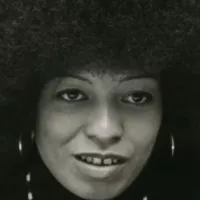
Angela Davis is an American political activist philosopher academic and...
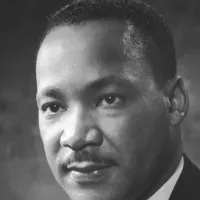
Martin Luther King Jr was a pivotal leader in the...
California is a U S state on the Pacific Coast...
The Union of Soviet Socialist Republics USSR existed from to...
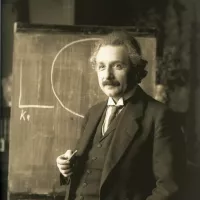
Albert Einstein - was a German-born theoretical physicist renowned for...
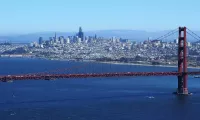
San Francisco is a major commercial financial and cultural hub...
Trending
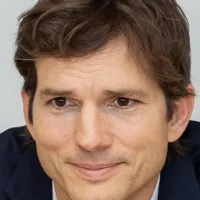
7 months ago Ashton Kutcher and Mila Kunis's bathing habits spark debate; Taylor met the couple.
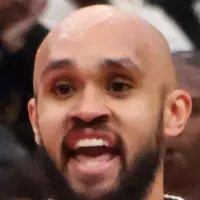
7 months ago Derrick White Prop Bets Analyzed for Celtics vs Knicks Game 5, May 14, 2025

1 month ago Laura Rutledge and Tim Tebow Pay Off a Lost Bet on SEC Nation.

7 months ago OG Anunoby's Former Teammate, Pascal Siakam, Becomes Key for Pacers in NBA Playoffs
Jaylon La Rone Tyson is an American professional basketball player currently with the Cleveland Cavaliers of the NBA drafted as...

2 months ago Laura Ingraham: A Prominent Voice in American Conservative Media
Popular

Candace Owens is an American conservative political commentator and author...

Tucker Carlson is an American conservative political commentator known for...

XXXTentacion born Jahseh Dwayne Ricardo Onfroy was a controversial yet...

Ilhan Omar is an American politician currently serving as the...

Kashyap Pramod Patel is an American lawyer who became the...

Bill Gates an American businessman and philanthropist revolutionized personal computing...
